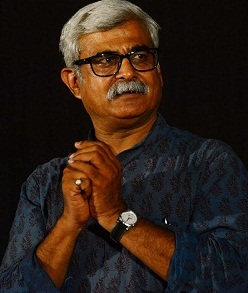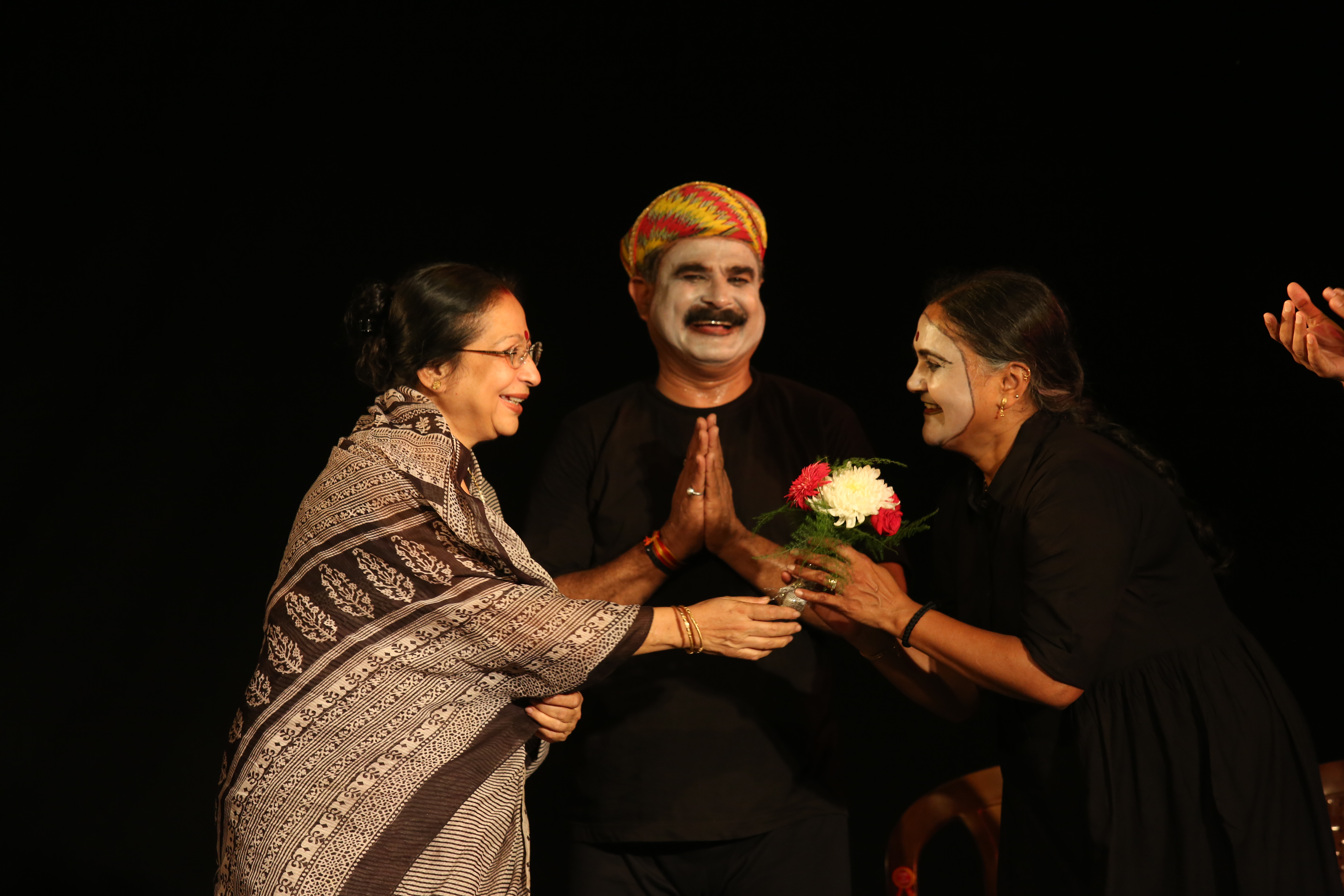
An Interview with Mime Maestro Vilas Janve
By Dr. Munesh Arora
In a world flooded with sound, it is rare to come across an art form that expresses the deepest emotions without uttering a single word. Mime — a language of silence — is not merely performance; it is poetry in motion. And one man has mastered this poetic expression with unmatched dedication: Vilas Janve.

A respected figure in Indian theatre and recipient of the Sangeet Natak Akademi Award, Vilas Janve has not only practiced mime but lived it. From Chandigarh to Udaipur, and later as a cultural pillar of West Zone Cultural Centre and Shilpgram, his journey is a testament to silent expression's power and purpose.
As someone who had the pleasure of living next door to him in Ravindra Nagar, I, Dr. Munesh Arora, witnessed his unwavering passion firsthand. Today, I feel privileged to bring you this exclusive conversation — a deep dive into the world of mime and the mind behind its enduring magic.
What is Mime, and How Do You Define It?
Vilas Janve: Mime, or Mookabhinay, is not simply acting without words. It is a language in itself — one where gestures, body movements, and facial expressions speak louder than spoken dialogue. From anger to compassion, joy to sorrow — every human emotion can be conveyed through this silent form. It uses physicality and nuance to communicate universally, across age, language, and culture.
Does Mime Have Roots in Indian Theatre?
Absolutely, In Bhartmuni’s Natyashatra ,we find four types of Abhianya , Angik ,Vachik ,Aharaya and Satvik. The old classic dramas of Kalidasa and Bhasa included mimes to avoid huge properties on stage. Elaborate scenes like chariot rides, storms, hunting in jungle, rains of fire or battles scenes were expressed through mime movements. Mime has always been part of our theatrical DNA — it just wasn’t labelled separately.
Mime as a Medium for Social Change--
Mime should go beyond entertainment. My work has always aimed to reflect societal concerns. Productions like Rakshason Ko To Rakho Pani (on water conservation) or Plantation Week v/s Plantation Weak (on environmental negligence) or Dust free Dustbin ( on cleanliness ),Road Heros ( on road safety ) were created to educate and inspire through healthy entertainment. In a noisy world, mime gives people a chance to reflect — not just watch. Me and my wife Kiran Janve (who herself is a senior artist) are disciples of Padmshree Niranjan Goswami who is founder of Indian Mime theater and National Mime Institute,Kolkata.
Why the Signature White Face Paint?
Because mime has no dialogue, about 40% of expressive communication is naturally lost. The white makeup compensates by highlighting facial expressions, making them visible even to those in the last row. We accentuate eyebrows, lips, and lines turning the face into a mobile mask. Every emotion — love, anger, heroism, laughter or sympathy — must register clearly on the face.
Reviving Vanishing Traditions Like Bahurupiya
While mime remains my core art, I also felt compelled to revive fading folk forms like Bahurupiya — traditional Indian impersonators. While working with West Zone Cultural Centre I organized a workshop on the art of Bahrupias where they exposed to various experts of performing arts to enhance their skills. Through Martand Foundation,Udaipur I collaborated National Bahrupia Festival ( Vyakti ek roop Anek) with Indira Gandhi National Centre for Arts, New Delhi, in 2018. I have contributed in many documentaries on this art form. I intend to bring an elaborated monograph on Bahrupia art .
Where we brought together three generations of artists ( Shivraj Bhand ,grandfather ,Firoz ,son and Arman, grandson on one stage, offering visibility and dignity to an almost forgotten tradition. These forms need more than memory; they need active celebration.
The Mime Philosophy: Expression, Not Exaggeration
Today’s media often confuses shouting with acting. But real performance is rooted in control, subtlety, and natural emotion. Mime teaches discipline. As an artist, your job is to make the audience feel, not just react. The audience today is intelligent — they don’t want melodrama; they seek meaning.
28 Years at Shilpgram: A Cultural Pilgrimage
Serving as Programme Officer at the West Zone Cultural Centre, Shilpgram, was a spiritual and professional journey. For over 28 years, I worked to nurture folk, tribal, and classical arts. I even wrote the Shilpgram Anthem, calling it a “pilgrimage for artists and artisans.” Shilpgram became more than a venue — it became a cultural sanctuary.
Sangeet Natak Akademi Honour: A Milestone
In 2021, I was humbled to receive the Sangeet Natak Akademi Award at the Vigyan Bhawan,New Delhi from the President of Bharat. It was not just an individual honour but recognition of mime as an important national art form. Awards like these inspire responsibility — to give more, teach more, preserve more.
Message to Young Artists
Learn to observe. Master silence. Know that acting is not about ego — it is about empathy. Mime teaches us to listen — to people, to society, to ourselves. If understood deeply, it not only shapes better performers but also better human beings.
Dr. Munesh Arora: Thank you, Janve ji, for your time and insights. You have proven that true expression doesn’t require words — only sincerity, skill, and silence. Your journey continues to inspire generations of performers and citizens alike.